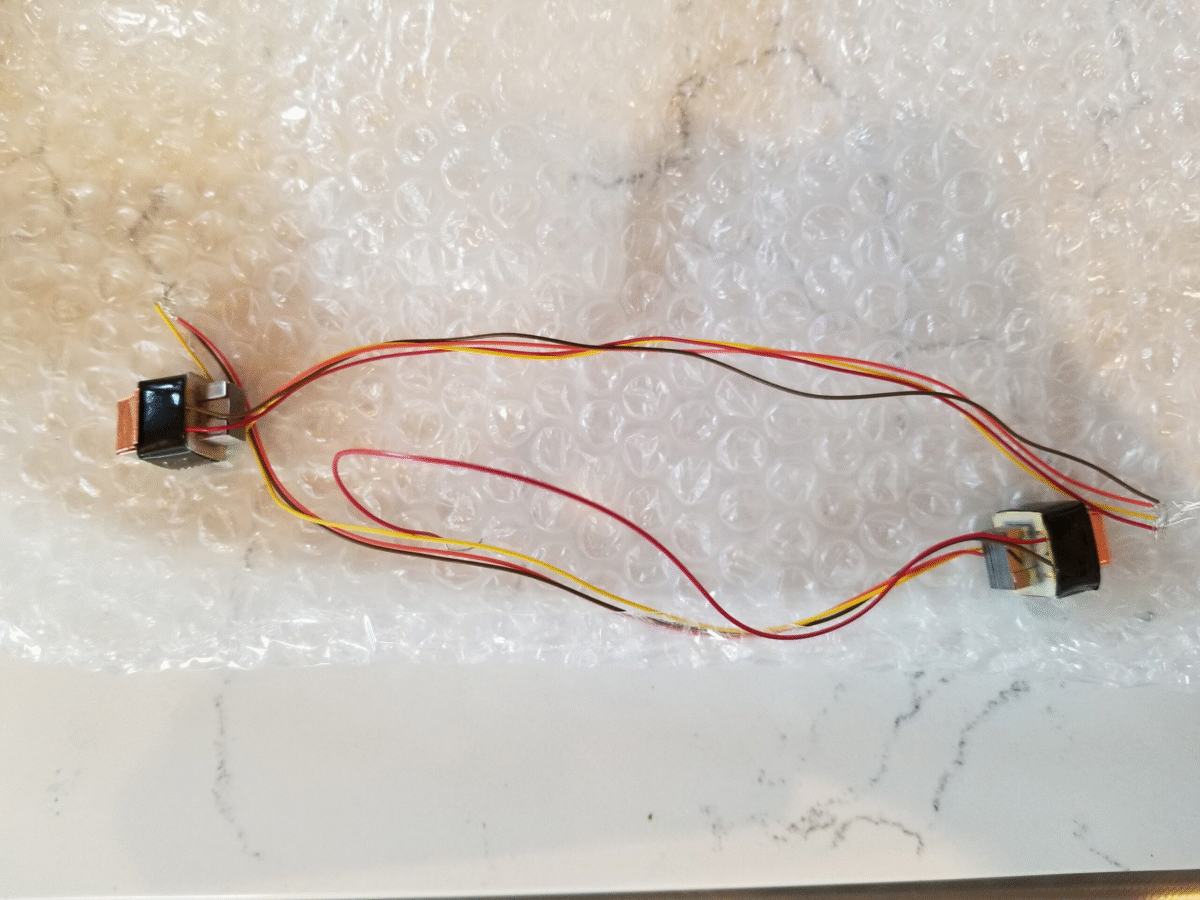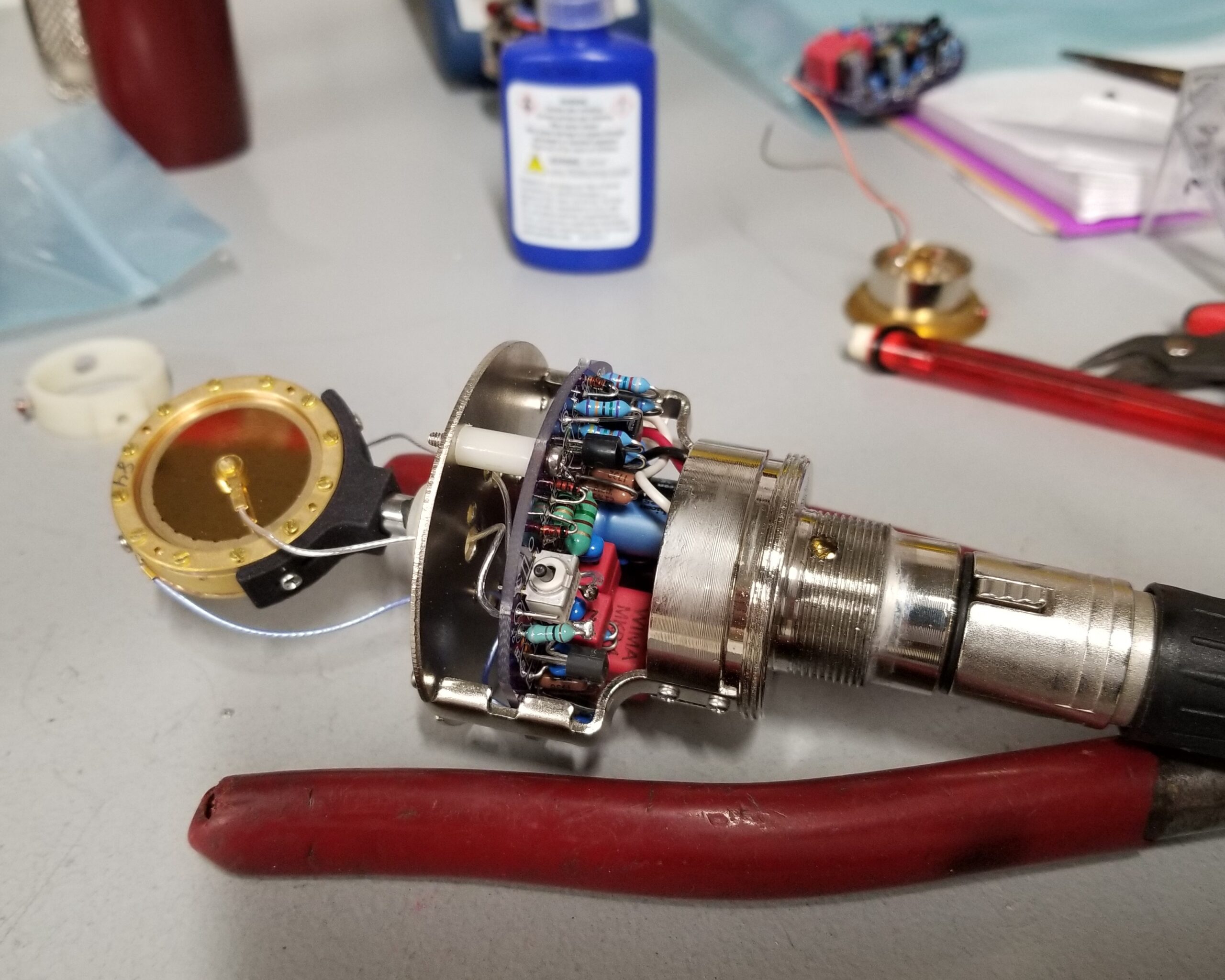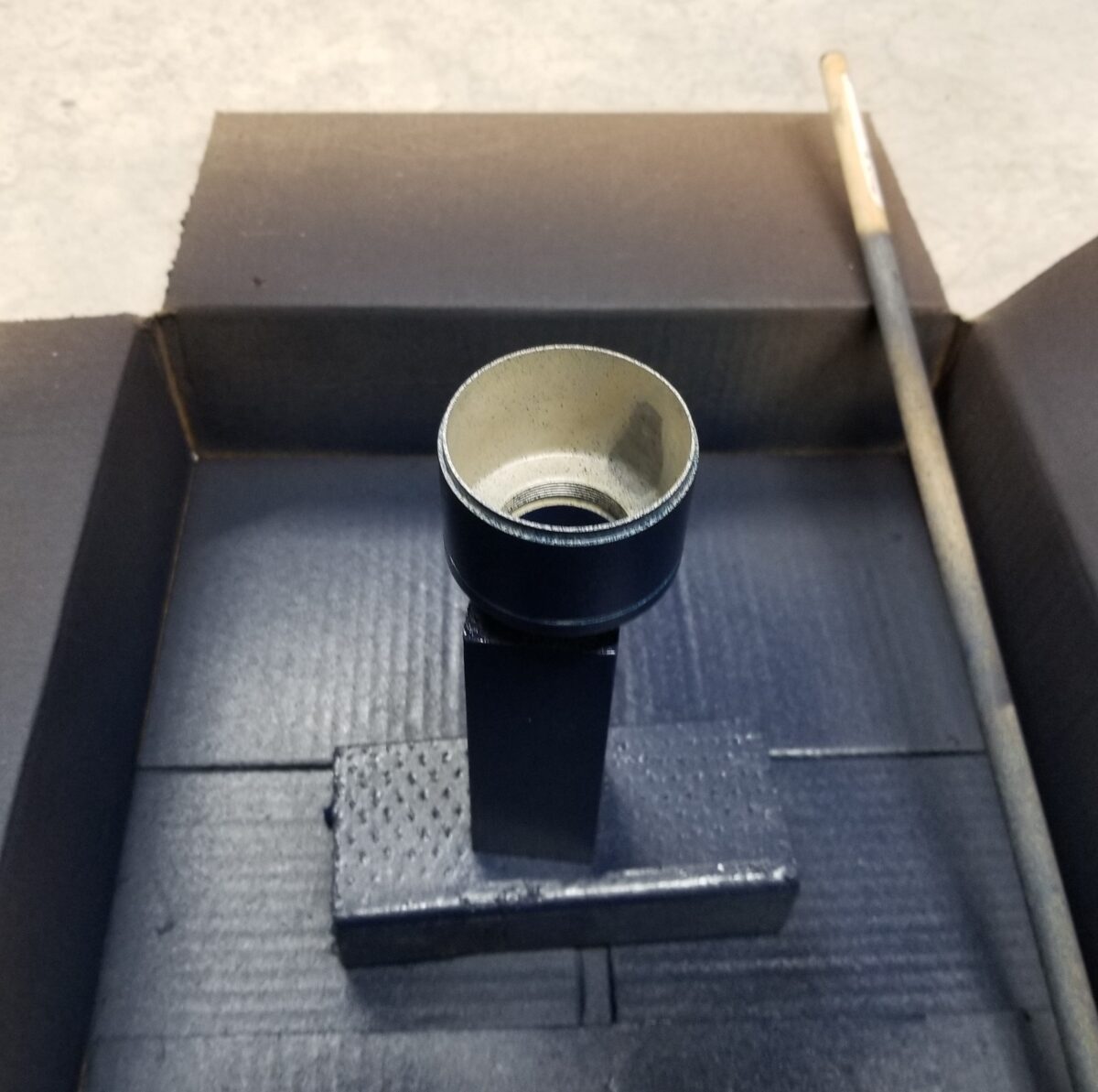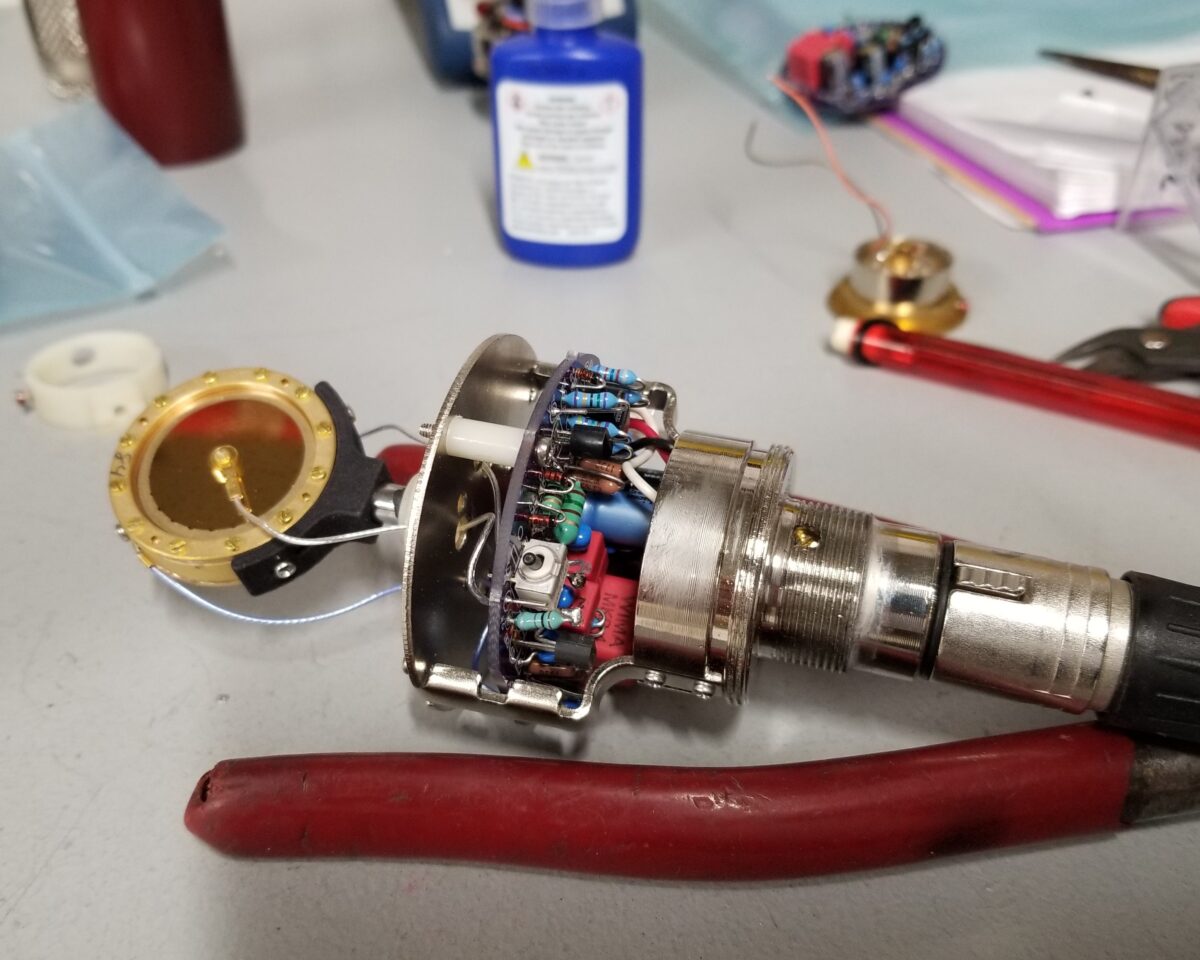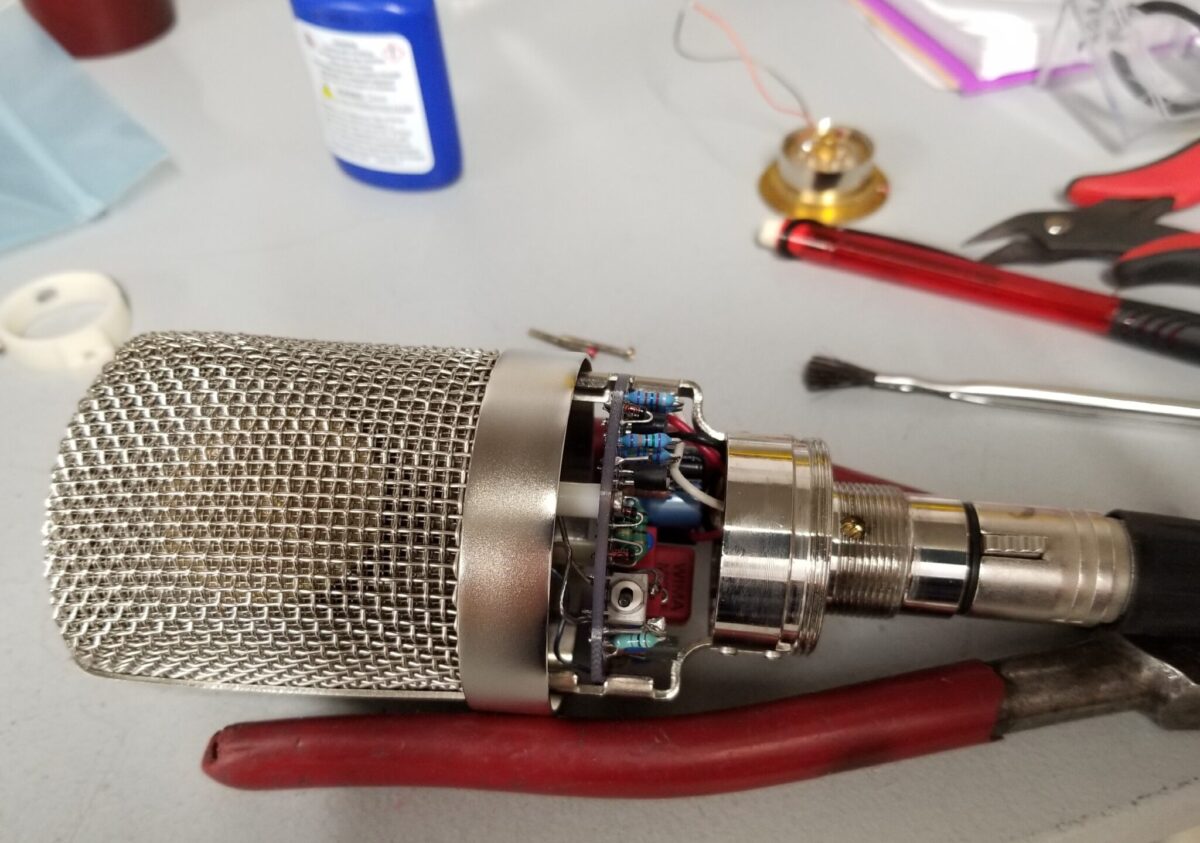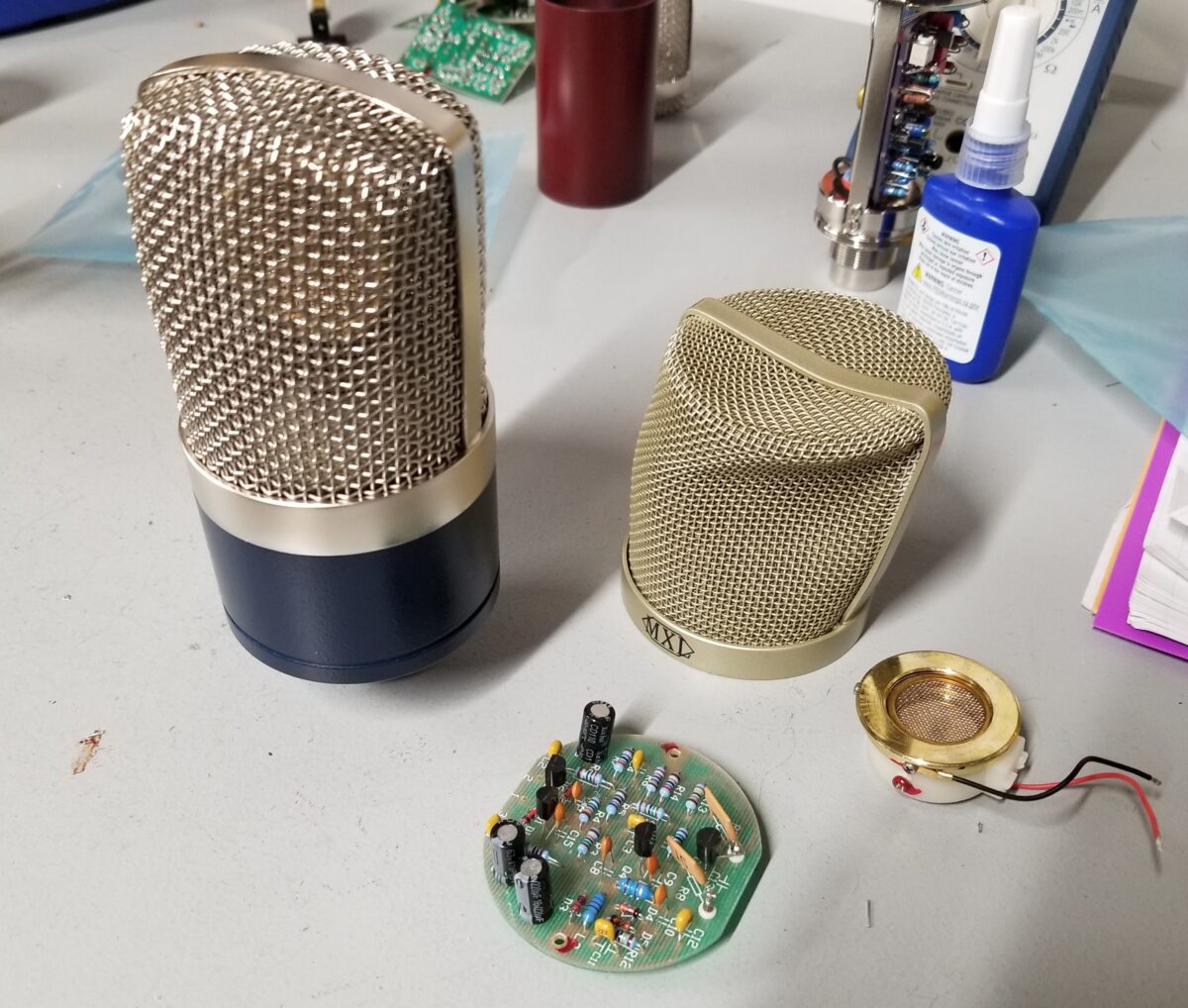Since I’ve been building and rebuilding microphones, I’ve only imported one type of body – the so-called BM800 style body. These are what I’ve been using for the RS/ series mics like the RS/47, RS/12t and RS/47t.
I’ve been tempted to try some other shapes and sizes that I see on my various suppliers’ websites and I finally acquired a few samples of some new styles. New shapes mean new Circuit Boards and I’ve finished jaSb (just another Schoeps board) transformerless and BFM (Big F’n Microphone) transformer-coupled board designs for both new bodies.
The Tall Boy Telefunken-ish style

When I ordered this thing, the photo didn’t do justice to how huge it is! First impressions are that it’s a nice quality body with a heavy cylinder and a good quality headbasket. The Internal frame is much bigger than a BM-800 style and so the circuit board is nice and big. The jaSb and BFM boards were very easy to design for this mic given all the space. In both cases, all components can fit on one side and in the case of the BFM, there is actually room for the transformer right on the main board!

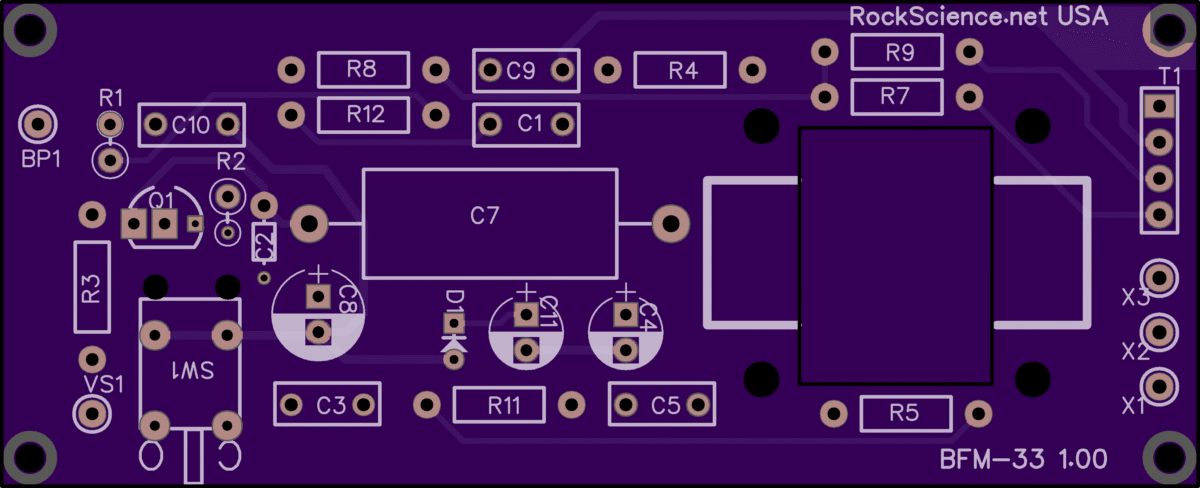
The TLM 102 Style
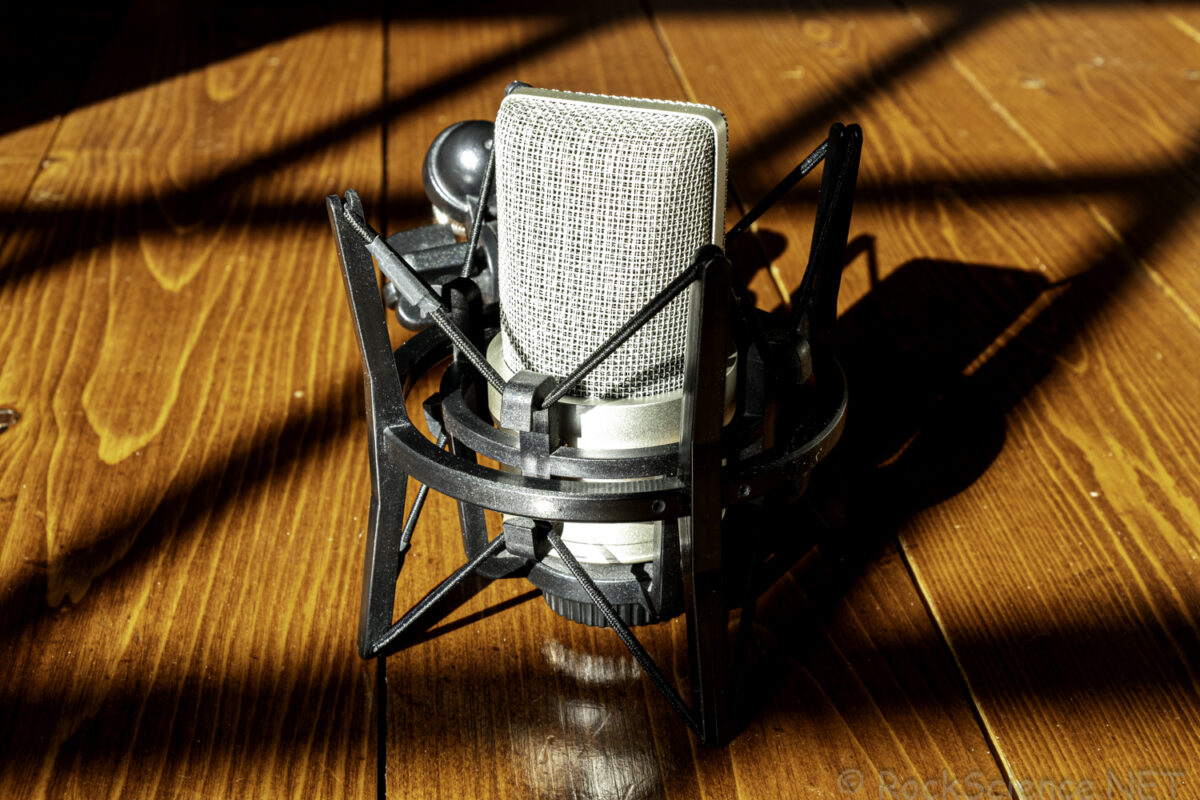
I was really excited to find a good source for these. I’ve always loved the look of the “little” Neumanns and I occasionally get asked about rebuilding a TLM mic (or a TLM clone). Until now, I had no circuitry that would fit. The samples arrived and I’m really happy with them. The cylinder is solid and heavy and the headbasket is beautiful.
In terms of size, this is the extreme opposite of the Tall Boy. These are tiny and the the circuit board layouts were very challenging – especially the transformerless jaSb version which has many more parts.
Unlike most of my other builds, these mics are not so straightforward to open. The headbasket is fastened to the body with three hex set-screws. For that reason and because of the limited size of the board, I’m not going to fit the optional internal pattern switch in theses. They will be full-time cardioid (or omni if you wanted). The board is round like an MXL 990 but only 47mm in diameter (with some notches cut out) compared to the 53mm diameter of the 990 board. Besides losing the pattern switch, I had to put some components on the bottom side for both boards.


